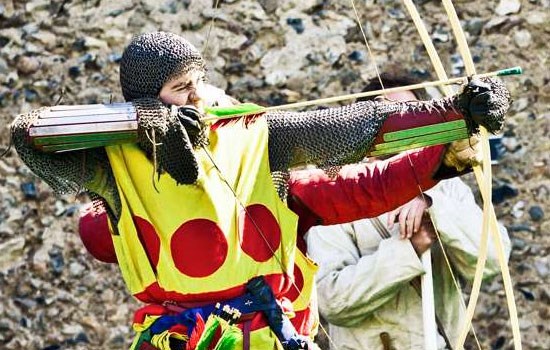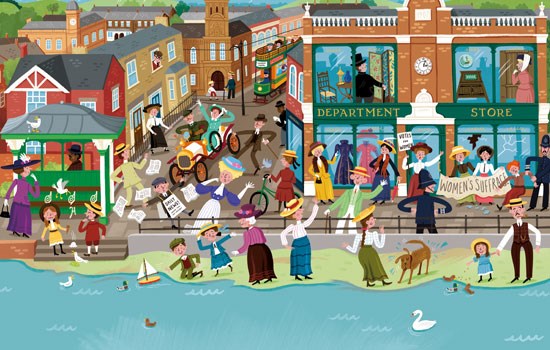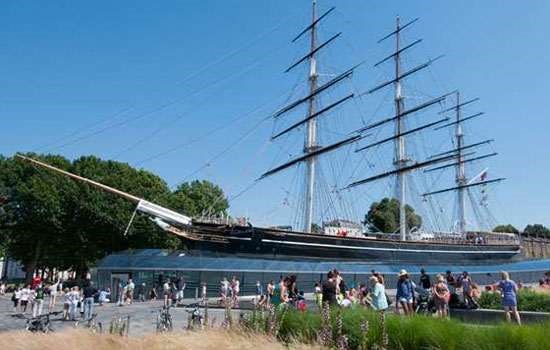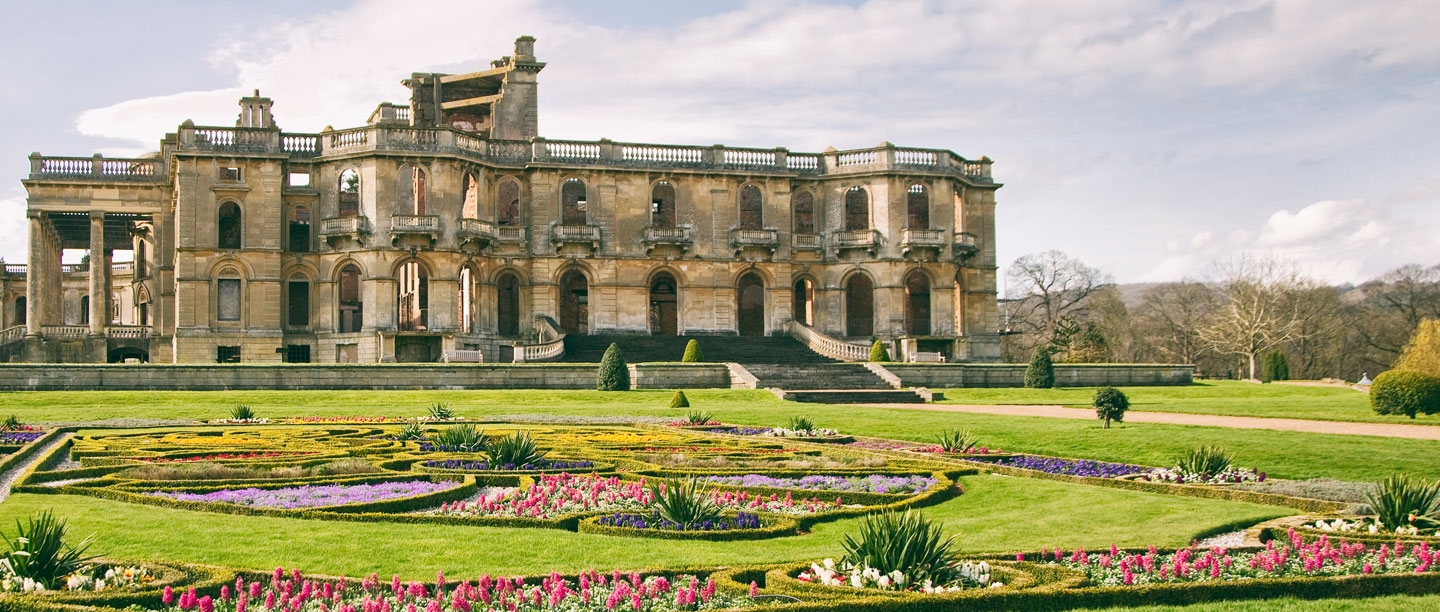
20 QUESTIONS QUIZ: RUINS
Test your knowledge of English Heritage ruins with this quiz.
-
1. Answer
Answer: Rievaulx Abbey
Rievaulx Abbey, founded in 1132, was the first Cistercian abbey to be established in the north of England. It quickly became one of the most powerful centres of monasticism in Britain, housing a 650-strong community at its peak in the 1160s under its most well-known abbot, Aelred. The monastery was suppressed in 1538, but the spectacular abbey ruins became a popular subject for Romantic artists in the 18th and 19th centuries.
-
2. In which year was Witley Court in Worcestershire ravaged by fire? A - 1837; B - 1887 or C - 1937
Answer: 1937
Witley Court was once of the great country houses of England, reaching its peak in the Victorian period when it was the setting for extravagant parties and royal entertainment. The house fell into decline after the First World War and was accidentally burned to a roofless shell in 1937. Although the west side was unaffected, the then-owner, Sir Herbert Smith, decided not to rebuild but to put the estate up for sale. Witley was never lived in again and was subsequently stripped and abandoned. It is still possible to gain a sense of the opulence and scale of the 19th-century interiors, as well as to see the earlier layers of the building’s history laid bare by the fire.

-
3. Which animal would you find carved throughout the medieval Warkworth Castle in Northumberland?
Answer: Lion
This was the badge of the powerful Percy family, Earls of Northumberland, who wielded almost kingly power in the north during the later Middle Ages. They owned Warkworth and nearby Alnwick Castle, where their descendants still live today. The Percy lion badge proudly adorns the Great Tower – the castle’s most distinctive feature.

-
4. Why is Bristol’s medieval Temple Church so named?
Answer: It was built by the Knights Templar
Bristol’s Temple Church is so-called because the original church was built by the Knights Templar, perhaps the most well-known of the medieval military orders. Founded in the early 12th century to protect pilgrims in the Holy Land, the Templars were ‘warrior monks’, obeying religious vows of chastity and poverty while trained for war. The leaning tower and walls of this large, late-medieval church in Bristol survived bombing during the Second World War.
-
5. Answer
Answer: Lindisfarne Priory
Founded by the Irish monk St Aidan in AD 635 and still a place of pilgrimage today, Lindisfarne Priory was one of the most important centres of early Christianity in Anglo-Saxon England. Today, you can see the evocative ruins of the richly decorated priory church built in c.1150. The four arms of the church meet under a ‘rainbow arch’, a rib from the high crossing vault that remarkably survived when the central tower collapsed in the late 18th century.
-
6.William the Conqueror built Battle Abbey shortly after his victory against King Harold in 1066. On what date was the battle fought?
Answer: 14 October
In the early morning of 14 October 1066, two great armies prepared to fight for the throne of England. On a hilltop seven miles from Hastings were the forces of Harold, who had been crowned king nine months earlier. Facing them on the far side of the valley below were the troops of Duke William of Normandy, who believed he was the rightful king. By the end of the day, thousands lay dead on the battlefield, and the victorious William was one step closer to seizing the throne. Then came the decisive moment: during the final assault, Harold himself was killed. The battlefield owes its survival to William, who founded Battle Abbey as penance for the bloodshed of the Norman Conquest. Much of the battlefield became part of the abbey’s great park, which formed the core of a country estate after the abbey’s suppression in 1538.

-
7. Lying midway along Hadrian’s Wall, which site is the most complete example of a Roman fort in Britain?
Answer: Housesteads Roman Fort
Housesteads is the most complete example of a Roman fort anywhere in Britain, and one of the best-known from the entire Roman Empire. Known as Vercovicium, it was one of 16 permanent forts supporting Hadrian’s frontier system. It was built within a decade of AD 122, when work on the Wall began, and was garrisoned by an 800-strong infantry regiment until the end of the 4th century. Excavations have revealed major buildings, defences and the civilian settlement outside its walls.
-
8. In which style was the Georgian mansion Sutton Scarsdale Hall in Derbyshire built?
Answer: Baroque
Sutton Scarsdale Hall was built in the Baroque style on the site of an existing house between 1724 and 1729 for the 4th Earl of Scarsdale. The architect for the new hall was Francis Smith of Warwick, who skilfully incorporated the earlier building of about 1469 within his design. Roofless since 1919, the ruins of the hall were saved from demolition by the writer Sir Osbert Sitwell, who bought it in 1946 after he had heard of the impending sale to dismantle the stonework.

-
9. Can you unscramble the name of this site, the best-preserved of the nine successful Carthusian monasteries founded in medieval England? TEMPORARY COG RUIN
Answer: Mount Grace Priory
Founded in 1398 by Richard II’s nephew Thomas de Holland, Mount Grace Priory in North Yorkshire is the best-preserved Carthusian monastery in England. In the Middle Ages, monks lived hermitic lives in one of Mount Grace’s 25 individual cells, each with a private garden. After the Reformation, the site became the home to wealthy aristocrats and industrialists. These included Lowthian Bell, who remodelled part of the priory in the Arts and Crafts style. Mount Grace was one of only nine Carthusian monasteries, also known as charterhouses, in medieval England.
-
10. When was Tintagel Castle in Cornwall built? A - 1230s; B - 1330s or C - 1430s
Answer: 1230s
In the 12th century, Tintagel gained literary fame when Geoffrey of Monmouth named it as the place where King Arthur was conceived. The story inspired, Richard, Earl of Cornwall – Henry III’s immensely wealthy younger brother – to build a castle here in the 1230s. The site was of no military value – legend alone seems to have inspired him to build here.
-
11. At which site was the process for deciding the date of Easter agreed, almost 1,400 years ago?
Answer: Whitby Abbey
The dates of our Easter holidays may seem hard to predict from year to year, but in seventh-century England things were even more confusing. There was no agreement among Christian groups on when to celebrate Easter, and it became the subject of heated discussion. At a landmark meeting now known as the Synod of Whitby, Christian missionaries gathered at Whitby Abbey to put forward their respective arguments, and a formula was finally settled upon – the one that we still use today to determine the date of Easter each year.
-
12. Ashby de la Zouch Castle suffered massive damage during which war?
Answer: The English Civil Wars
During the Civil Wars, Henry Hastings, younger brother of Ferdinando, the 6th Earl, occupied Ashby as a Royalist base, and Ashby formed a crucial link between Royalist operations in the north and south. Hastings fortified the town and castle on an impressive scale; the great tower was described in 1644 as ‘Hastings’ stronghold’. After a series of successful Parliamentarian raids on the town, Hastings eventually surrendered on 28 February 1646. He agreed to demolish the newly constructed fortifications around the town, while the garrison was allowed to march free with ‘trumpets sounding, drums beating, colours flying’. The castle buildings were initially used to imprison prominent Royalists, but later in 1646 it was directed that the defences be demolished. The earl subsequently complained that the demolition squad had far exceeded its orders and entirely ruined his ‘only convenient mansion’.

-
13. Which Northumberland castle can only be reached by foot, on a journey over a mile away from the village of Craster?
Answer: Dunstanburgh Castle
One of the most atmospheric castles in England, Dunstanburgh Castle was built in the second decade of the 14th century by Thomas, Earl of Lancaster, the wealthiest nobleman in England. Earl Thomas was later executed for his role in the barons’ rebellion against Edward II, but the castle was extensively modernised in the 1380s under John of Gaunt. It played a role as a Lancastrian stronghold in the Wars of the Roses, but fell into disrepair at the end of the Middle Ages, and its ever more ruinous silhouette inspired many artists, including JMW Turner.
-
14. Farleigh Hungerford Castle stands in the valley of which river? A Frome B Severn C Avon
Answer: Frome
Begun in the late 14th century, Farleigh Hungerford Castle was for 300 years the home of the Hungerfords. After distinguished beginnings, the family suffered a series of disasters and scandals – some of which took place within the castle walls. A ‘romantic ruin’ since the 1730s, it retains two of its corner towers, parts of its outer courtyard defences and a well-preserved chapel with outstanding 13th-century wall-paintings, family monuments and collection of unusual anthropoid (human-shaped) lead coffins.
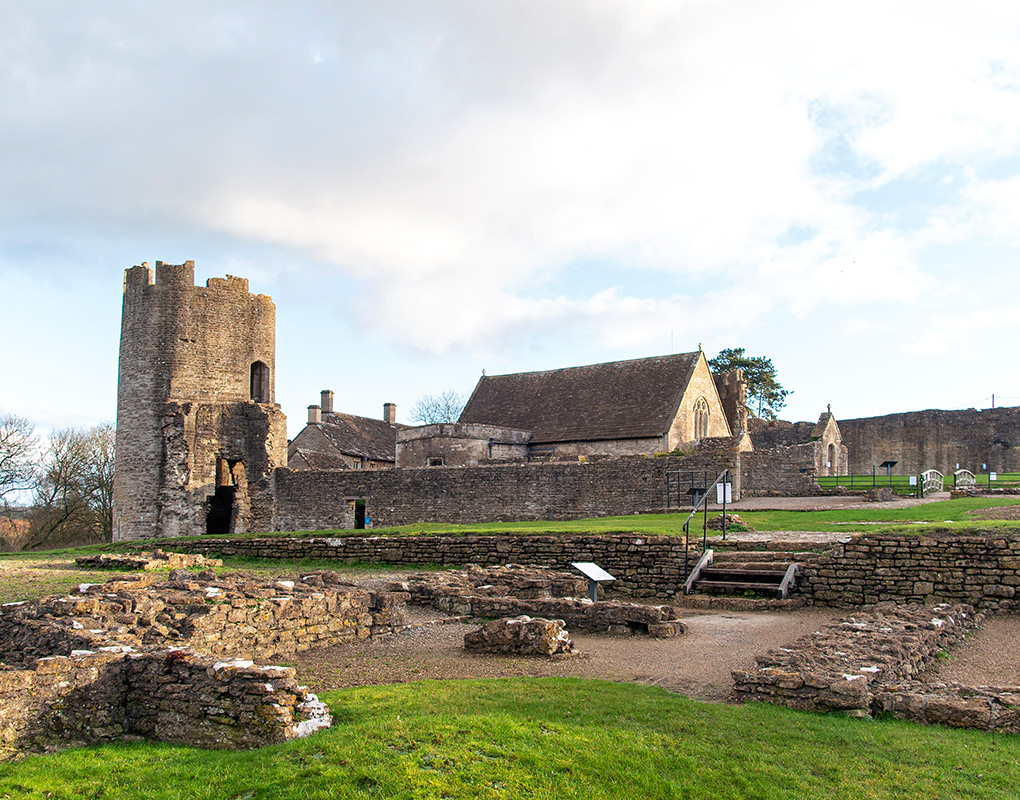
-
15.Which abbey was originally created as a burial place for the Anglo-Saxon kings of Kent?
Answer: St Augustine’s Abbey
Little remains of St Augustine’s today, but at its height, the abbey was one of the most significant religious sites in medieval England. The sixth-century home of a mission to convert the Anglo-Saxons grew to become an important centre of learning and spirituality that lasted for centuries, and now forms part of a UNESCO World Heritage Site.
-
16. Which gardener transformed the landscape surrounding Roche Abbey in the 18th century?
Answer: Lancelot ‘Capability’ Brown
After 200 years as ruins, the remains of the former abbey buildings and the valley in which they lay underwent a transformation in the 1770s. The 4th Earl of Scarborough (1725–82) contracted England’s most well-known landscape designer, Lancelot ‘Capability’ Brown, to bring ‘order’ to the valley by remodelling it to contemporary tastes. Brown engineered a lake and islands over Roche’s southern buildings, substituted a river for the medieval water channels, contrived a waterfall to cascade from the Laughton Pond, and composed irregular tree groupings in surrounding fields. He also levelled the ruins’ irregular walls to provide a uniform grassed foreground for a banqueting lodge.
-
17. The longest continuous stretch of Hadrian’s Wall visible today is located just outside of which fort? A - Housesteads Roman Fort; B - Birdoswald Roman Fort or C - Chesters Roman Fort
Answer: Birdoswald Roman Fort
Birdoswald’s history began when a wooded spur was cleared for the building of Hadrian’s Wall in AD 122. The fort, added to the Wall shortly afterwards, was garrisoned by an infantry cohort of over 800 men and remained in occupation throughout the Roman period. Its defences are the best preserved of any along the Wall. The fort was reoccupied in the Middle Ages and was the target of raids by border reivers in the 16th century.
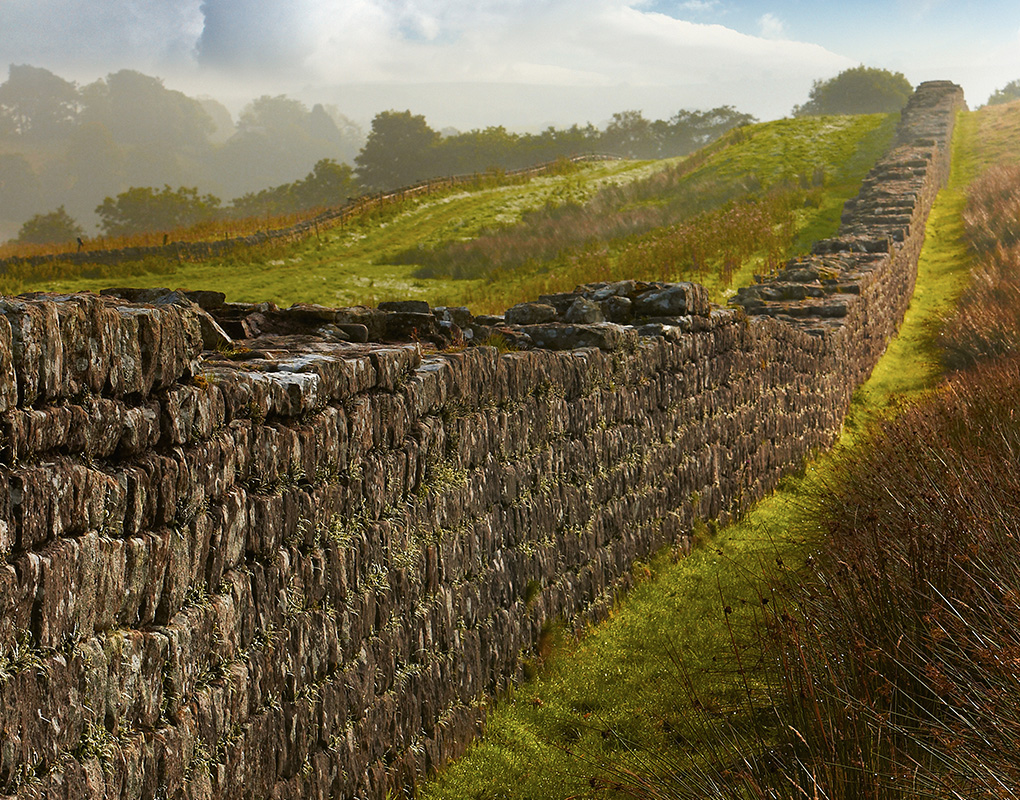
-
18. The earliest settlement of Salisbury can be found at which site?
Answer: Old Sarum
Old Sarum combines a royal castle and cathedral within an Iron Age fortification, and for 150 years was a major centre of both secular and ecclesiastical government. Neither castle nor cathedral was occupied for long: in 1226 the cathedral was moved to Salisbury, although the castle remained an administrative centre into the 14th century. Old Sarum lived on, however, as a notorious ‘rotten borough’ (a district that was able to elect an MP despite having very few voters), which continued to elect Members of Parliament until 1832.
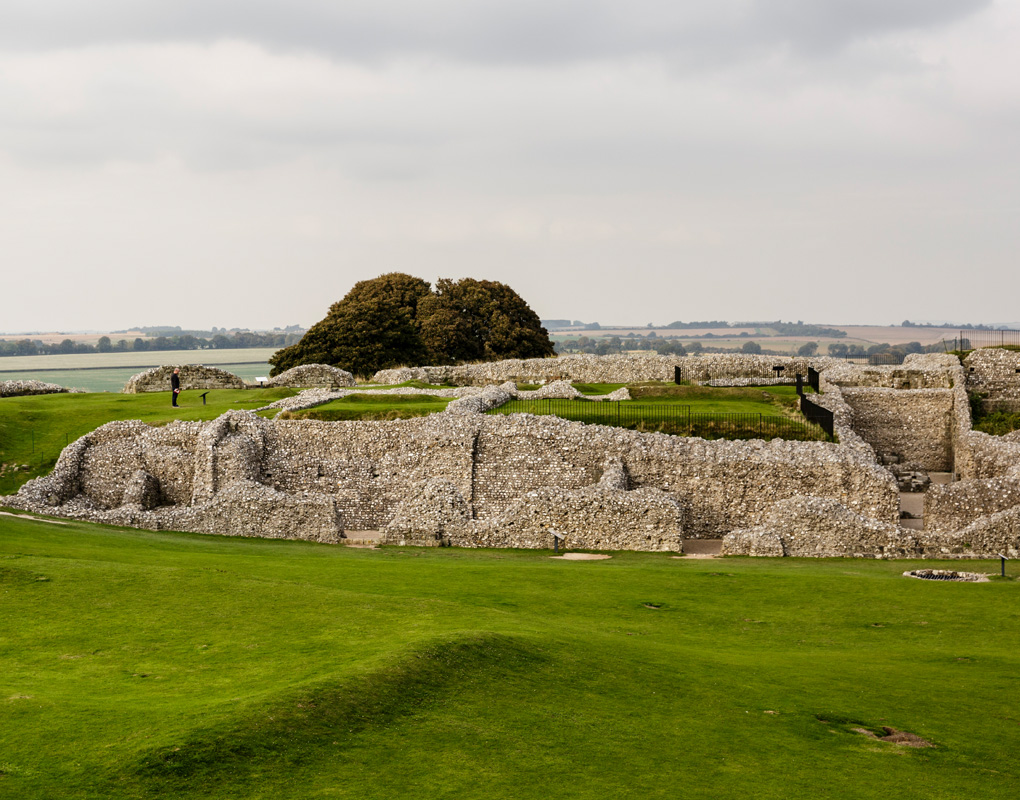
-
19. Barnard Castle was developed by which king, whose boar emblem is carved above a window in the inner ward?
Answer: Richard III
Richard Plantagenet (1452–85), Duke of Gloucester and later King Richard III, owned Barnard Castle from 1471 until his death. Richard took a particular interest in this castle and undertook several repairs and alterations during his period of lordship. The most obvious survival from his ownership is the projecting oriel window of the great chamber, overlooking the river. The underside of the lintel bears a carving of a boar, Richard’s heraldic emblem. A similar use of this device can be seen on a window of St Mary’s parish church nearby, which contains other features attributed to Richard.
-
20. In which county would you find Richborough Roman Fort and Amphitheatre?
Answer: Kent
Richborough is a key site in the history of Roman Britain, used during the entire length of the occupation, from the invasion of AD 43 until the end of Roman rule around 410. Though now an inland backwater, 2,000 years ago it lay on the Kent coast, and it was here that at least part of the Roman Emperor Claudius’s invasion force of 40,000 men landed, in what would have been a massive military operation of great complexity. Over time the site developed from a military supply base into a thriving port town and later a massive fort.
You may also be interested in



